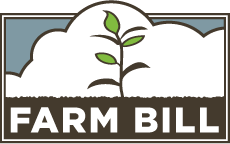
The Farm Bill was created in 1933 to figure out the economic hardships of agriculture. This also included unfair practices of exporting and soil erosion and what these negative impacts had on agriculture in the USA. Within the Farm Bill there are a variety of programs, including CRP (Conservation Reserve Program). Every 5 - 7 years the farm bill expires and needs to be revamped and put back into the governments hands to ensure the newest practices are being used.


The Conservation Reserve Program was initiated officially in 1985 by the Farm Bill. Unofficially it was established in the 1930s and 40s with the beginning of the Farm Bill. This program helps to create sustainable practices for farmers. When land is not in use for agriculture, CRP pays farmers to have natural ecosystems on their land, including water, soils, native grasses and wildlife. It was estimated that USA loses about 2 billion tons of soil annually, so preserving these lands is crucial. In the Prairie Pothole Region however, there has been a recent decrease in the people renewing their agreement with the CRP. This is due to the increase in demand of corn subsidies to create ethanol biofuel (
CRP conversion article). Approximately 9.7 million acres have been taken out of the Conservation Reserve Program since 2007, which could potentially be detrimental to the habitat waterfowl use in the region.
 The Farm Bill was created in 1933 to figure out the economic hardships of agriculture. This also included unfair practices of exporting and soil erosion and what these negative impacts had on agriculture in the USA. Within the Farm Bill there are a variety of programs, including CRP (Conservation Reserve Program). Every 5 - 7 years the farm bill expires and needs to be revamped and put back into the governments hands to ensure the newest practices are being used.
The Farm Bill was created in 1933 to figure out the economic hardships of agriculture. This also included unfair practices of exporting and soil erosion and what these negative impacts had on agriculture in the USA. Within the Farm Bill there are a variety of programs, including CRP (Conservation Reserve Program). Every 5 - 7 years the farm bill expires and needs to be revamped and put back into the governments hands to ensure the newest practices are being used. The Conservation Reserve Program was initiated officially in 1985 by the Farm Bill. Unofficially it was established in the 1930s and 40s with the beginning of the Farm Bill. This program helps to create sustainable practices for farmers. When land is not in use for agriculture, CRP pays farmers to have natural ecosystems on their land, including water, soils, native grasses and wildlife. It was estimated that USA loses about 2 billion tons of soil annually, so preserving these lands is crucial. In the Prairie Pothole Region however, there has been a recent decrease in the people renewing their agreement with the CRP. This is due to the increase in demand of corn subsidies to create ethanol biofuel (CRP conversion article). Approximately 9.7 million acres have been taken out of the Conservation Reserve Program since 2007, which could potentially be detrimental to the habitat waterfowl use in the region.
The Conservation Reserve Program was initiated officially in 1985 by the Farm Bill. Unofficially it was established in the 1930s and 40s with the beginning of the Farm Bill. This program helps to create sustainable practices for farmers. When land is not in use for agriculture, CRP pays farmers to have natural ecosystems on their land, including water, soils, native grasses and wildlife. It was estimated that USA loses about 2 billion tons of soil annually, so preserving these lands is crucial. In the Prairie Pothole Region however, there has been a recent decrease in the people renewing their agreement with the CRP. This is due to the increase in demand of corn subsidies to create ethanol biofuel (CRP conversion article). Approximately 9.7 million acres have been taken out of the Conservation Reserve Program since 2007, which could potentially be detrimental to the habitat waterfowl use in the region.

No comments:
Post a Comment